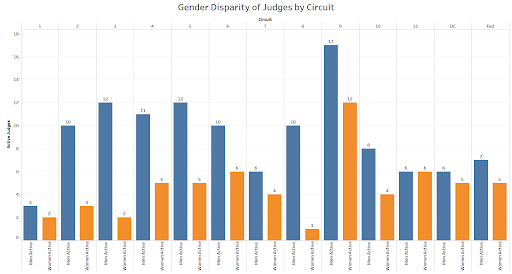Alex Jones of InfoWars (Photo by Drew Angerer/Getty Images)
On December 14, 2012, 26 people were murdered in Newtown, Connecticut, at the Sandy Hook Elementary School. When discussing this horrific tragedy on his show, conspiracy theorist Alex Jones did what conspiracy theorists and someone like Alex Jones would do: he made a bunch of vile claims that included things like the shooting was “a giant hoax,” “as phony as a three-dollar bill,” or a “false flag” operation intended as a pretext for new gun-control legislation.
As I expect any sane person can imagine, the surviving parents of the Sandy Hook victims were appalled and, in fact, some of them sued Jones in Texas (where Jones’ show is based) for defamation and emotional distress. In response, Jones asked the Texas courts to have the defamation claims dismissed by arguing his speech was protected by the First Amendment. In his brief to the Texas Supreme Court requesting cert, Jones argued that “[t]hroughout American history, many people have … dedicated time and resources to questioning official narratives and digging deep into stories to develop connections that others have not.”
Last month, however, the Texas Supreme Court rejected Jones’ cert petition and as a result the defamation claims can now proceed to trial (unless the cases are settled beforehand). An attorney who is representing one of the parents was reportedly and understandably pleased with the denial of cert saying that “Mr. Jones is learning that his frivolous efforts to delay this case will not spare him from the reckoning to come.”
In one of these defamation cases, my friend and law professor Derek Bambauer coauthored an amicus brief to the Texas Supreme Court arguing that the defamation claim against Jones should proceed. Over email, I spoke with him about this case and the current state of defamation law in general. Our conversation (edited for length) is below:
Tyler: One of the most horrible aspects of this case from my perspective was Alex Jones portraying Ms. De La Rosa [a parent of a Sandy Hook victim] as a public figure because she spoke to the media — at their request — concerning her son’s murder, and on a few occasions gave her opinions as to how other parents might not suffer that same tragedy in the future. Your brief goes into why, as a matter of public policy, it is important for the court to consider Ms. De La Rosa as a “private figure.” Why does the distinction between public and private figure matter? And why was it so important for public policy that Ms. De La Rosa be considered a private figure?
Derek: Ms. De La Rosa suffered the worst tragedy any parent can imagine. Before the killings, she was an ordinary person like the rest of us. Afterwards, in the midst of unfathomable grief, she answered a few questions put to her by a few of the large number of journalists who traveled to Sandy Hook to report on the murders. She neither was a celebrity nor became one, and she certainly did not seek out the public eye. (The argument that she did so is, in fact, morally repugnant.)
Defamation law has built-in protections to safeguard the open expression of ideas and opinions that is so central to our democratic tradition and to the First Amendment’s provisions. One of these is that people who are considered public figures — politicians especially, but also professional athletes, reality television stars, and the like — must be prepared to withstand greater criticism and commentary than private figures. This is partly because public figures are generally tied to important social issues: racism, electoral reform, climate change, and so on. And it is partly because public figures generally possess a formidable ability to defend themselves against accusations that they consider inaccurate. LeBron James and former President Donald Trump can get on broadcast and cable television literally anytime they want. Ms. De La Rosa, like most of the rest of us, cannot.
In legal terms, for someone who is a public figure to win a defamation claim, they must prove that the defendant spoke or wrote the statement at issue knowing it was false, or with a reckless disregard for whether it was false. (Lawyers call this standard “actual malice,” but that term tends to confuse more than it clarifies.) This makes it very difficult for public figures to win defamation cases, which is exactly the point: the genesis of this standard came from a case at the height of the civil rights movement, when police and politicians in the American South used defamation lawsuits (and complicit court systems) to silence the voices of civil rights activists and the journalists reporting their struggle. The Supreme Court, in New York Times v. Sullivan, acknowledged that there is a tradeoff: some defamation of public figures will occur without liability under this heightened standard, but society is better off having a robust debate over the issues of the moment even despite those harms.
By contrast, the standard for defamation of private figures is less searching. The Supreme Court has never ruled definitively on this issue, but it’s generally agreed that defamation law is constitutional if it imposes a standard of negligence towards whether a statement is true or not.
So, in many ways, the determination of whether a plaintiff is a public figure determines the outcome of the case. It is extremely hard to meet the burden of the actual malice standard. And this points up one of the key ironies of this case: Alex Jones thinks people like Ms. De La Rosa must take extraordinary care not even to chat briefly with the media after an event as traumatic as the murder of a loved one, lest they be considered a public figure. If she has even minimal contact, then someone like Jones — with a powerful media outlet at his disposal — need take scant if any precautions to verify his factual claims before broadcasting them to the world. She must be exacting, but he can be slipshod. I suspect that most readers will, like me, find that to be the very definition of chutzpah.
Tyler: Chutzpah indeed! I agree with you as to the proper distinction in this case certainly. But what about the role the internet and blogs and the Youtubes, TikToks, what have you, have done to blur the line between private and public figures and possibly now given everyone access or a potential voice in mass media? How do you see this new media technology having an impact on defamation cases moving forward?
Derek: Yes, in a sense, Justice Stevens was right in Reno v. ACLU when he said that with the internet, anyone can become a town crier with a voice that resonates farther than any soapbox could make possible. Some people have skillfully used the Net to actually achieve general fame; most who have tried remain known only to friends and family. This suggests that we need a third category — people who are “internet famous” in some circles but not others. I might have a passionate following for my reviews of computer keyboards, but not a single person who cares about my views on baseball. The best candidate for dealing with “internet famous” might well be the limited-purpose public figure. This is a doctrinal move that is relatively underdeveloped, but essentially holds that you may have individuals who are public figures for certain purposes or topics, but private figures for others. That’s a potentially appealing middle ground, especially if courts begin to develop standards of fault somewhere between negligence and actual malice. The limited purpose public figure doctrine could also allow courts to be a bit more sophisticated in their analysis, because it could incorporate both intent and effect. The greater the intent to achieve fame (or notoriety), and the greater the actual extent of that public recognition, the higher the standard of fault that an individual would need to prove to succeed in a defamation case. The courts are not always good with theories of the middle range — intermediate scrutiny in constitutional questions is frankly a mess — but I think this prospect is better than a collapse into a world where there are only public and private figures.
Tyler: High-profile defamation cases are in the news a lot lately. And given the amount of disinformation out there (and the damage it has reaped) many are probably thinking that liability should be expanded to go after perceived bad actors. Do you agree with the current limits on defamation law?
Derek: Expanding defamation liability has become popular on both sides of the political aisle of late (albeit more so in the Republican camp). But I think we should be very cautious before making any changes to the doctrine, for several reasons. First, we ought to see how some of the current litigation plays out. For example, there’s no evidence of any significant electoral fraud in the 2020 presidential election, but supporters of former President Trump have launched allegations against several voting machine manufacturers. It’s early days for that litigation, but in my view, the companies have a strong case — they have already elicited a number of retractions, even from media outlets, which is telling. Anything in the legal system takes time, perhaps more time than it should, but we need to be a bit patient and test the eventual outcomes.
Second, sometimes unlikely and seemingly defamatory stories turn out to be true. Who would have thought that the (now former) president paid over $100,000 to conceal an extramarital affair with an adult film actress? Harsher liability, or that imposed more readily, could easily chill reporting into these matters. I don’t much care who the president sleeps with, but there are many Americans who do, and who might well change their votes because of that.
Lastly, we’re in the early stages of a technological revolution — one that is at least the equal of the printing press. Digital networked information — in short, the internet — has unleashed a torrent of commentary and data and everything else. Information costs have declined remarkably — nearly to zero, in many cases. One of the virtues of a common law doctrine like defamation is that it is relatively cautious in breaking new ground or surrendering the old, guided by actual cases and with an eye towards the lessons of history. That sort of regulatory modesty is admirable when dealing with a technological upheaval this profound.
Tyler: Can defamation litigation make an impact on the level of disinformation out there?
Derek: In November, I would have said that defamation was effectively a dead letter in dealing with disinformation. But recently, the voting machine firm suits, the ability for the case of the Sandy Hook parents to move forward, and Rachel Maddow’s big win on attorneys’ fees have caused me to be more optimistic. If this is a trend and not an exception, defamation might be doing valuable work: it leverages distributed information and the strong motivation of targeted people and organizations to clear their names. And it operates within the set of institutional checks that our governments have developed over a long period of time, and that internet platforms are just beginning to mull over. So, stay tuned, but I might be changing my mind on this one.
 Tyler Broker’s work has been published in the Gonzaga Law Review, the Albany Law Review, and is forthcoming in the University of Memphis Law Review. Feel free to email him or follow him on Twitter to discuss his column.
Tyler Broker’s work has been published in the Gonzaga Law Review, the Albany Law Review, and is forthcoming in the University of Memphis Law Review. Feel free to email him or follow him on Twitter to discuss his column.




 Ellen Trachman is the Managing Attorney of
Ellen Trachman is the Managing Attorney of 

 Kathryn Rubino is a Senior Editor at Above the Law, and host of
Kathryn Rubino is a Senior Editor at Above the Law, and host of 













 Tyler Broker’s work has been published in the Gonzaga Law Review, the Albany Law Review, and is forthcoming in the University of Memphis Law Review. Feel free to
Tyler Broker’s work has been published in the Gonzaga Law Review, the Albany Law Review, and is forthcoming in the University of Memphis Law Review. Feel free to 
